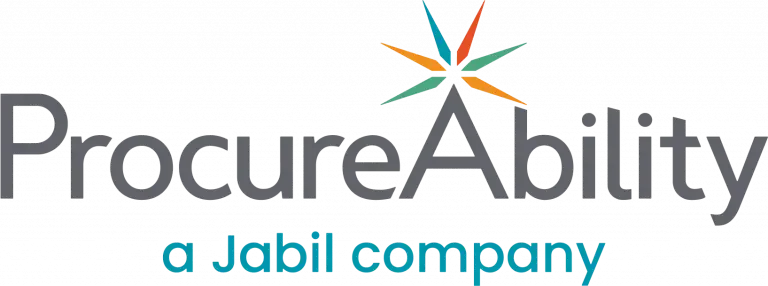Sustainable Procurement Strategies for Modern Supply Chains

Read the full article in Future of Sourcing and below:
Part 1: Redefining supply chain efficiency in a new era
For most CEOs, sustainability in procurement and supply chain management is now an essential part of the long-term corporate agenda. Beyond integrating ESG goals into corporate strategy, many companies have made public commitments (such as achieving net-zero emissions by 2025 or 2030) while recognizing that regulations and global supply chains are constantly evolving especially considering the changing political landscapes across the world.
Regardless of who sets the strategy or makes the pledge, it often falls to procurement and supply chain teams to deliver on those promises against the organizational ESG Goals. These teams are tasked with synthesizing/expanding public-facing sustainability goals and translating them into actionable plans, with clear metrics, timelines, and accountability.
Whether it’s navigating new regulations, tracking/managing global emissions, ensuring ethical labor practices, or evaluating the performance of n-tier suppliers against this sustainability goals, procurement must demonstrate measurable impact and be ready to communicate it clearly.
Enhancing supply chain transparency through multi-tier sustainability reporting
One of the biggest challenges in sustainable procurement is over-reliance on self-reported supplier data. While self-reporting is a useful starting point, it’s often not sufficient to serve as evidence that companies are living up to their commitments, especially when you move beyond tier-1 suppliers.
Can a CEO or CPO confidently say that sustainability data from tier-2 or tier-3 suppliers is accurate? Often, the answer is no. The solution lies in implementing robust supplier audit processes and digital tools for verification, ensuring that all claims are traceable and verifiable.
Most procurement organizations have a detailed understanding of their tier-1 suppliers, but the further down the supply chain you go, the harder it is to monitor. Achieving reliable multi-tier supplier transparency requires close collaboration with direct suppliers—encouraging them to adopt the same level of scrutiny and accountability with their own suppliers. It’s important to have strong data and process governance along with the tools to maximize the efficacy of the data that is collected.
Embedding circular supply chain practices into procurement strategy
Beyond traditional n-tier supply chain models, today’s companies must embed circular economy principles into product design and procurement processes. This is particularly critical in eCommerce and consumer goods sectors, where packaging, delivery, and returns introduce major sustainability challenges.
Reverse logistics, packaging waste, and short product lifecycles (especially in fashion and electronics) demand a shift from linear to circular thinking. That means sourcing materials designed for reuse, planning for end-of-life product collection, and embedding circularity into every stage of procurement – not just during annual reviews or Earth Day campaigns.
Building a sustainable global supply chain workforce
Sustainable procurement isn’t just about materials and emissions, it’s also about human capital. As companies expand into global markets like India, Vietnam, Mexico, or China, there’s enormous potential to build thriving, ethical labor forces. But simply hiring talent for short-term gain is not sustainable in the long run. Organizations need to invest in the right organization building capabilities to enable this thriving new supply chain workforce.
True supply chain sustainability involves investing in local communities, supporting skills development, and building a workforce capable of adapting to evolving manufacturing and service needs. Even in the U.S., the talent gap is a major consideration and potentially a barrier to reshoring manufacturing at scale. Procurement must take an active role in shaping the workforce of the future by collaborating with HR, local governments, and NGOs to drive sustainable economic development. This might also need a concerted effort in supplier development programs to meet long-term objectives.
Aligning procurement strategy with ESG accountability and public expectations
Procurement’s role in sustainability doesn’t end with internal implementation. Increasingly, sustainability progress is shared publicly, in ESG reports, investor briefings, and press releases. That means procurement teams must prepare for scrutiny and be ready to stand behind their strategies and results.
Today’s consumers and markets expect transparency and accountability across even the most complex global supply chains. Whether or not procurement teams are accustomed to public-facing roles, they must be ready to respond—equipped with data, context, and credibility.
This readiness starts with sustainable planning processes: How will performance be defined, measured, and enforced? How can procurement create an extended value chain that’s not only efficient but also resilient and responsible?
Procurement as a strategic driver of sustainable change
As procurement and supply chain teams work to meet (and exceed) sustainability goals, they must navigate a rapidly shifting landscape with clarity, intent, and resilience.
By strengthening supplier transparency across all tiers, embedding circular economy principles, prioritizing ethical and future-ready labor forces, and aligning with corporate ESG accountability, Procurement can lead the transformation towards a truly sustainable supply chain. It’s not just a support function anymore – it’s a strategic lever for long-term business success.
Part 2: Strategies to simplify and optimize your supply chain
As organizations push to meet ambitious sustainability goals, procurement teams are uniquely positioned to drive supply chain sustainability by reducing waste, simplifying production, and optimizing resource use. While some sustainability risks, such as conflict minerals, are less difficult to identify, others, like material impact across global flows, are more complex and harder to measure.
Whether you’re working toward net-zero or simply aiming to lower your environmental footprint, optimizing procurement for sustainability starts with simplifying wherever possible. The more streamlined your supply chain, the easier it is to track, audit, and improve.
Reduce supply chain waste through simplification and standardization
In supply chains, customization often leads to waste. The more unique specifications in your product lines, the more inventory, safety stock, excess materials, packaging variations, and inefficiencies in your supply chain accumulates.
For consumer-packaged goods (CPG) companies especially, reducing the number of custom specs is a simple but effective way to improve sustainability. When it’s impossible to avoid custom specs, the best strategy to reduce waste is to push the customization to as further to the end as possible, this streamlining directly impacts material movement, energy use, and supply chain emissions, all while improving production speed and reducing cost.
Using robotics to improve sustainable warehouse operations
Robotics is playing a growing role in sustainable procurement. All supply chain organizations in various industries are implementing intelligent robotics systems in their distribution centers to optimize material flow, based on real-time learning about volume, velocity, and placement.
This technology doesn’t replace human labor, it enhances it. By automating repetitive tasks and optimizing warehouse layout, robotics supports both operational efficiency and sustainability goals.
Streamlining packaging for eco-friendly procurement
Traditionally, many companies created custom packaging for each SKU, resulting in excessive material use and supply chain inefficiencies. Now, forward-thinking procurement teams are standardizing packaging formats and deferring customization to the final production stages. Simple examples are having standard cardboard boxes that can be formed on the assembly line to meet the specifications and printing at the tail end of the process to reduce any extra waste.
By narrowing packaging options to just a handful of SKUs, organizations reduce waste, simplify logistics, and create a more flexible, sustainable supply chain.
Reverse logistics: Designing the supply chain for end-of-life recovery
One innovative approach to waste reduction is to reverse-engineer the supply chain based on the ideal end-of-life scenario – what materials can be recovered, reused, or recycled.
Inspired by European waste collection policies, companies are reevaluating their packaging materials and disposal processes. Procurement leaders are asking: “If recovery is the end goal, what changes should we make upstream?” This reverse logistics mindset empowers procurement to offer the business clear, sustainable options, instead of rigid directives.
Aligning cost reduction with sustainability in procurement
Cost savings and sustainability don’t have to be at odds. In fact, simplifying the supply chain often reduces both waste and expense.
When procurement teams consolidate suppliers, materials, and product specs, they reduce variation, inventory overhead, and logistical complexity. This enables not just a leaner operation, but a greener one. By asking the right questions and surfacing high-impact opportunities, procurement can align ESG goals with long-term financial performance.
Looking ahead: Sustainability starts with simplicity
As enterprises move toward more responsible operations, procurement and supply chain leaders play a critical role. From packaging to production, from warehouse automation to material recovery, there are a myriad of small and big strategies to make the supply chain more sustainable.
By focusing on waste reduction, process simplification, and supply chain transparency, procurement teams can help their organizations meet environmental goals, without compromising on efficiency or cost.
About Darshan Deshmukh
Darshan has extensive global operations and delivery experience in the managed services and advisory fields. He has deep expertise in building global programs focused on procurement, strategic sourcing, category management, and supply chain/procurement transformation.
Prior to joining ProcureAbility, Darshan spent most of his career building large-scale, global delivery operations. He spent a decade in a series of global leadership positions in IBM’s Integrated Supply Chain organization and then joined Denali Sourcing Services as operations leader and was instrumental in establishing and growing the company’s global delivery capability. After Denali’s acquisition integration with WNS, Darshan transitioned to tech start-ups, OpenGov and Icertis, where he built their global professional services and customer success organizations. Darshan has worked with global clients in high-tech, financial services, manufacturing, retail, utilities, and healthcare/pharma.
Darshan holds an undergraduate degree in Mechanical Engineering, a graduate degree in supply chain from Penn State, and an MBA from MIT Sloan School of Management. He loves international travel, movies, and everything food, and divides his time between Seattle and Palm Springs.
About ProcureAbility
ProcureAbility, a Jabil company, is the leading provider of procurement services, offering advisory, managed services, digital, staffing, and recruiting solutions. For nearly 30 years, we have focused exclusively on helping clients elevate their procurement function.
We combine leading methodologies, analytics, market intelligence, and industry benchmarks with our uniquely flexible and customizable service delivery model. Global organizations of all sizes trust ProcureAbility to transform their procurement operations, drive growth, and reimagine what’s possible.
Let ProcureAbility help you reimagine your procurement capabilities.
Media contact:
Kathleen M. Pomento
Chief Marketing Officer | ProcureAbility
kpomento@procureability.com



